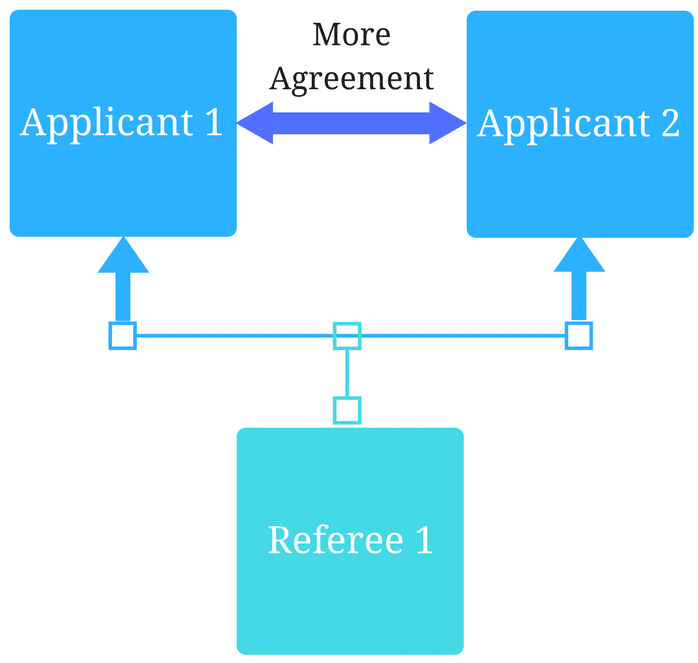Widening Pathways to the Engineering Profession: Creating Opportunities for All

August 8, 2024
The engineering field faces challenges related to a need for more varied viewpoints and lived experiences, especially in leadership roles. This situation may limit innovation and make addressing today’s complex challenges more difficult. Plus, with fewer high school students choosing to pursue a college education, admissions teams are left with a shrinking pool of applicants.
To build an engineering workforce that can tackle the big problems of tomorrow, we must attract and retain a broader range of students. The unique lived experiences and varied perspectives of applicants from different groups are key to driving the innovation needed to address today’s engineering problems effectively.
The importance of varied perspectives in engineering
Engineers are responsible for addressing some of the world’s toughest challenges, like climate change, cybersecurity, and technological advancement.
According to Dr. Emily Morosco of the Schulich School of Engineering at the University of Calgary, “We need to think about how we bring different perspectives into the classroom because different perspectives lead to better engineering solutions.”
Put simply, a mix of perspectives is needed to find the best solutions to engineers’ challenges.
In a recent webinar on widening pathways into engineering education, Keith Johnson, Professor and Chair of the Department of Engineering Technology at East Tennessee State University, spoke on the need for unique perspectives. “Different perspectives breed innovation,” Johnson says. He stressed that graduates need more than just technical knowledge – they also need leadership skills, professionalism, and critical thinking.
When engineering leadership is dominated by a single viewpoint, solutions can fail to address the needs and experiences of all communities.
Broadening pathways into engineering
One of the most effective ways to attract and support more varied voices in engineering is to rethink how we attract and support students. Engineering faculties are stepping up, reaching out to students who might not have considered engineering a career option before.
Dr. Morosco also emphasized the need to show students that engineering is about making a difference in the world. “Students want to have an impact on the world. They want to solve global grand challenges. Whether or not they perceive engineering as a way they can do that, there’s a bit of a disconnect there.”
Engineers solve real problems that impact people’s lives. Many underrepresented groups, like women, neurodiverse individuals, and people from low socioeconomic backgrounds, often don’t see engineering as a viable career option and self-select themselves out of this career path. They might lack role models or not have been encouraged to pursue these paths. That’s why changing how we talk about engineering and what makes a good engineer is essential.
Engineering programs are also responsible for broadening pathways. Offering course options tailored to different learning styles and approaches creates broader opportunities for success and retention for non-traditional students.
Engineering technology programs offer a hands-on, practical approach to engineering education, making the field more accessible to students who may not thrive in traditional, theory-heavy settings. These programs focus on applying theoretical knowledge to real-world problems, bridging the gap between classroom concepts and industry needs. By aligning with industry standards and emphasizing practical skills, engineering technology opens doors for a broader range of students, fostering the various perspectives needed to drive innovation in the field.
These programs are helping change the narrative. They offer hands-on, project-based learning that shows students the real-world impact of their work. This practical approach helps students see how engineering can be a powerful tool for change.
Creating a welcoming, supportive environment
Creating an environment where students feel safe, heard, and valued is critical to attracting students from all backgrounds. It also goes beyond academic support.
Keith Johnson notes that appropriate teaching practices, active learning, and collaborative projects are essential. “Graduates must understand the cultures and perspectives of different groups to drive innovation in their careers,” he explained.
This type of environment also challenges the stereotype of who can succeed in engineering. Many students from certain groups often think that engineering is not for them; it is the responsibility of engineering programs and the profession to change that message and provide the support they need to thrive.
Appropriate teaching, mentorship programs, and community-building activities all help students feel connected and supported.
This sense of belonging is vital to broadening pathways into engineering.
Looking ahead
The future of engineering depends on our ability to welcome and nurture talent from all walks of life. By broadening the pathways into the profession, we enrich the field with varied perspectives and ensure we are better equipped to tackle the complex challenges ahead.
Want to learn more? The following webinars provide engaging insight into the path forward for engineering education:
- Widening Pathways for Future Engineers: Watch now!
- Engineering Technology Programs – Widening Pathways into the Profession: Watch now!
Related Articles

How interviews could be misleading your admissions...
Most schools consider the interview an important portion of their admissions process, hence a considerable…
Reference letters in academic admissions: useful o...
Because of the lack of innovation, there are often few opportunities to examine current legacy…
